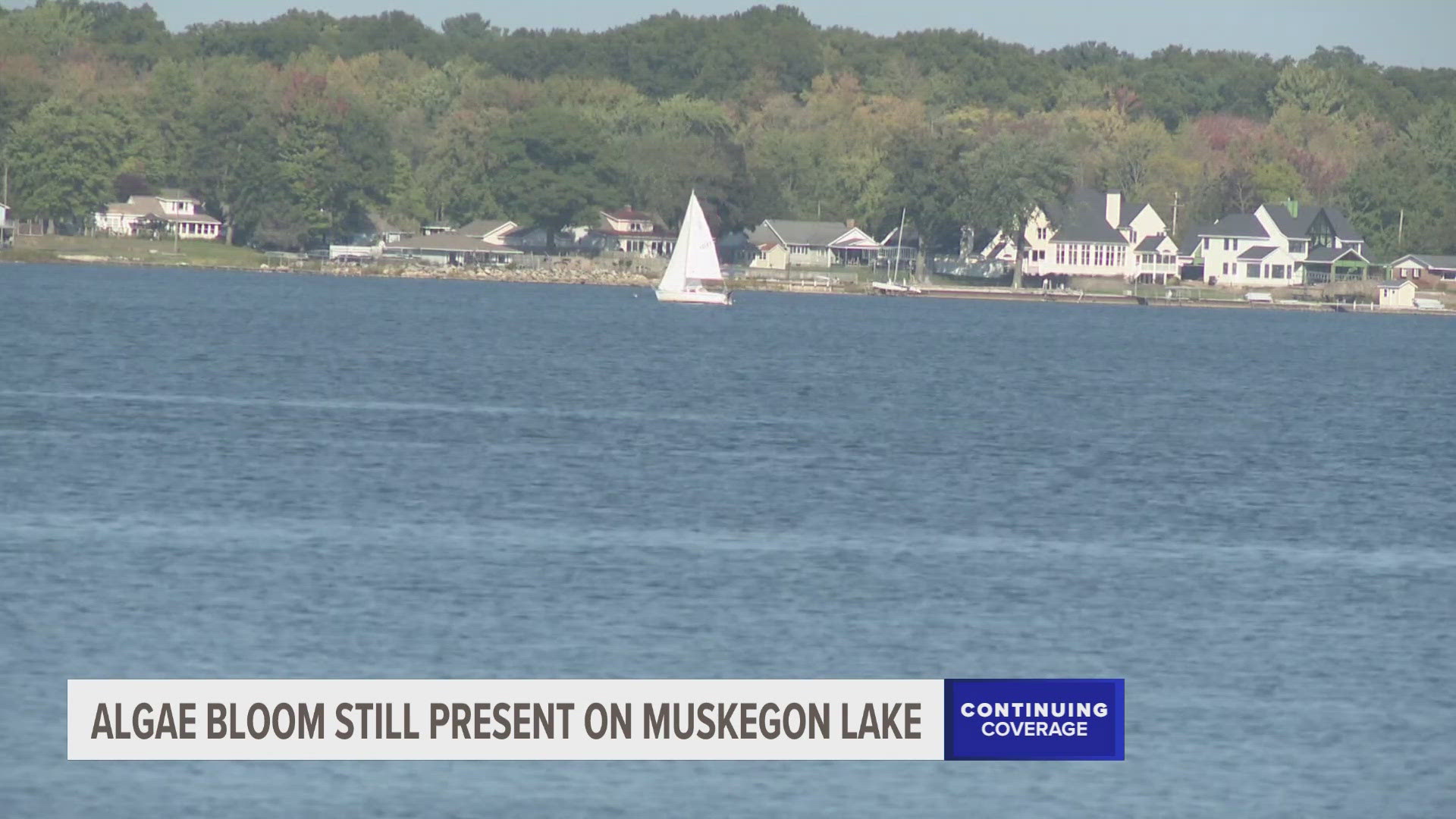MUSKEGON, Mich. — An algae bloom that took over Muskegon Lake this year has persisted into the fall. Experts are trying to figure out the cause.
Alan Steinman, with Grand Valley State University’s Annis Water Resources Institute, said climate might be to blame.
“I think the temperature has a lot to do with it,” he said. “The nutrients have always been there, and they will stay there, but the warm temperatures are really what's keeping it stimulated and continuing its growth.”
And the cause of these warm temperatures? Climate change.
“I think having the lack of a winter last year, a serious winter, also exacerbated the problem this year, because what happens is the blue-green algae overwinter in these spores that are called akinetes, and then these, they sit in the sediment, and they germinate when temperatures warm up, so they were warmer earlier this year,” he said. “So the germination occurred earlier. The Bloom started earlier. And they might be germinating throughout the whole year now, or through the whole summer, which is accounting for some of its persistence.”
If the bloom is nutrient-related, Steinman and his colleagues can figure out what nutrient is stimulating the toxicity. But if it’s temperature-related, there’s not a lot he can do.
The blue-green algae gives the lake a green hue. Exposure to toxic blue-green algae can cause a rash or itchy skin to humans, but to pets, it can be life or death. Steinman says they lose a couple of dogs each year to exposure.
The algae bloom doesn’t just affect humans and pets.
“Down the line, it affects people's real estate values as well,” he said. “So, in addition to the human health issues, there's also the recreational esthetic and home value issues as well.”
Because of the weather, there isn’t a clear timeline on when the bloom will disperse. Steinman said we could see it into November.

